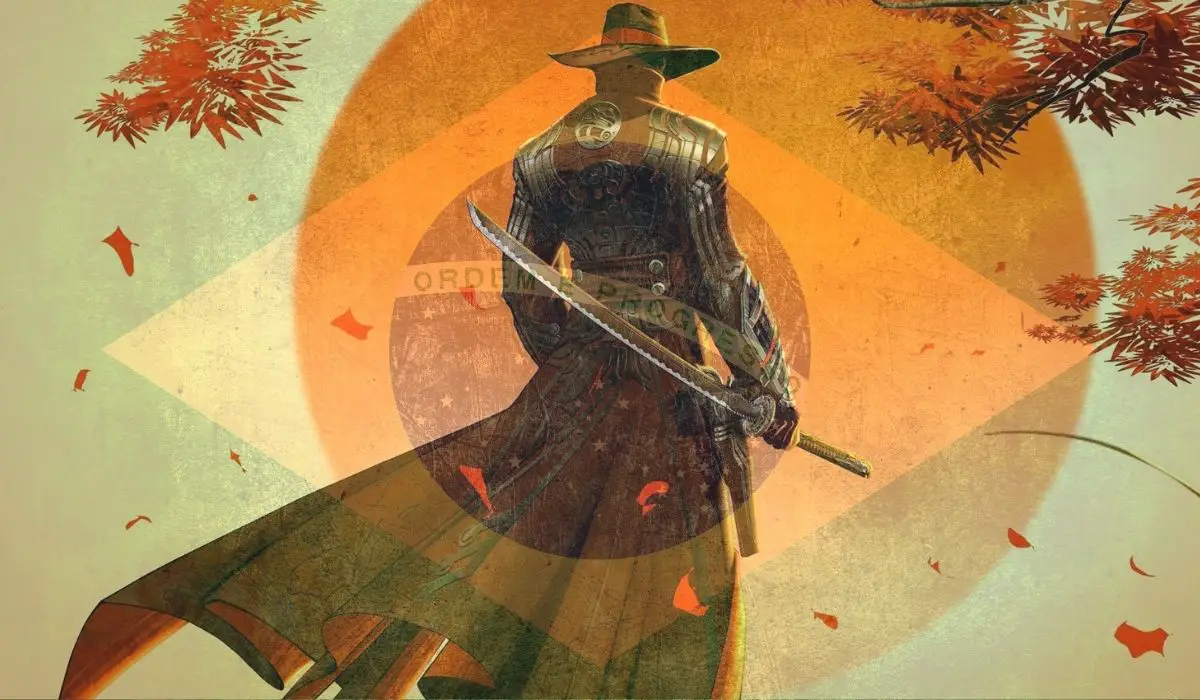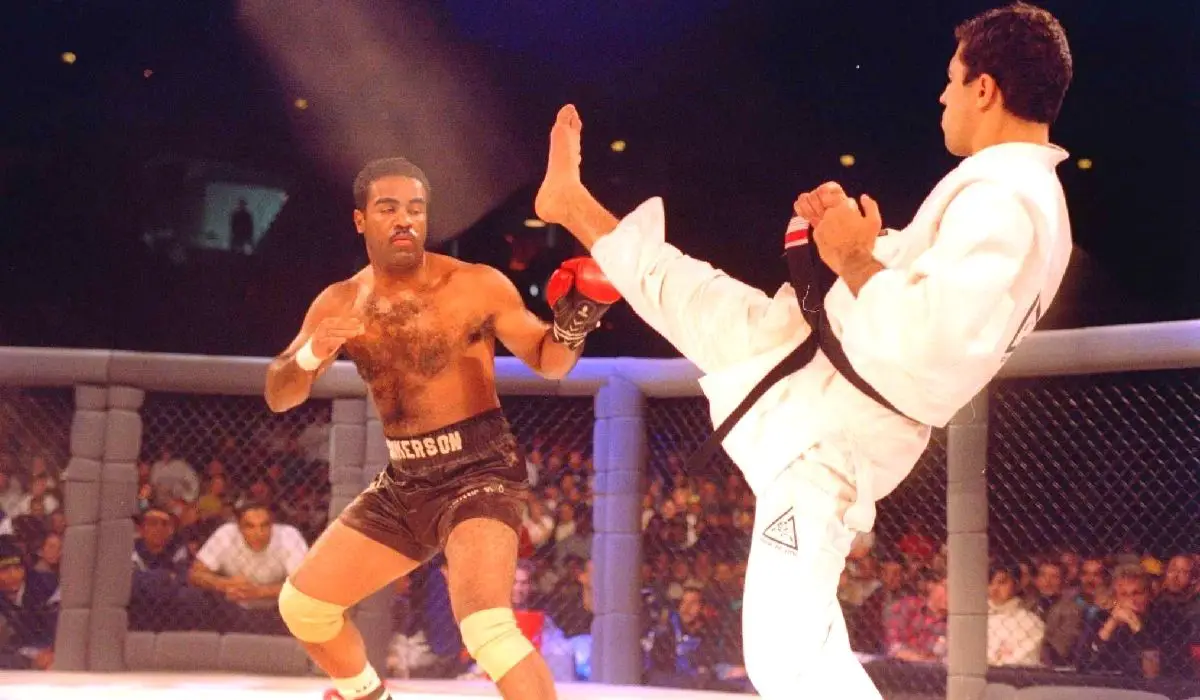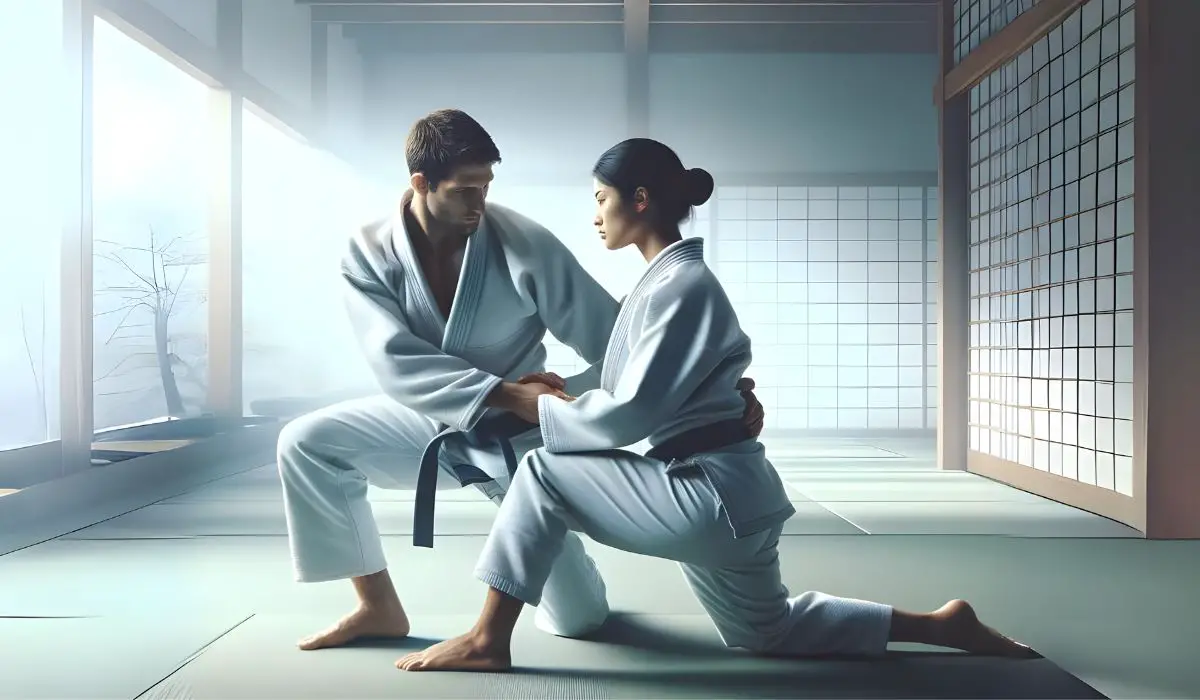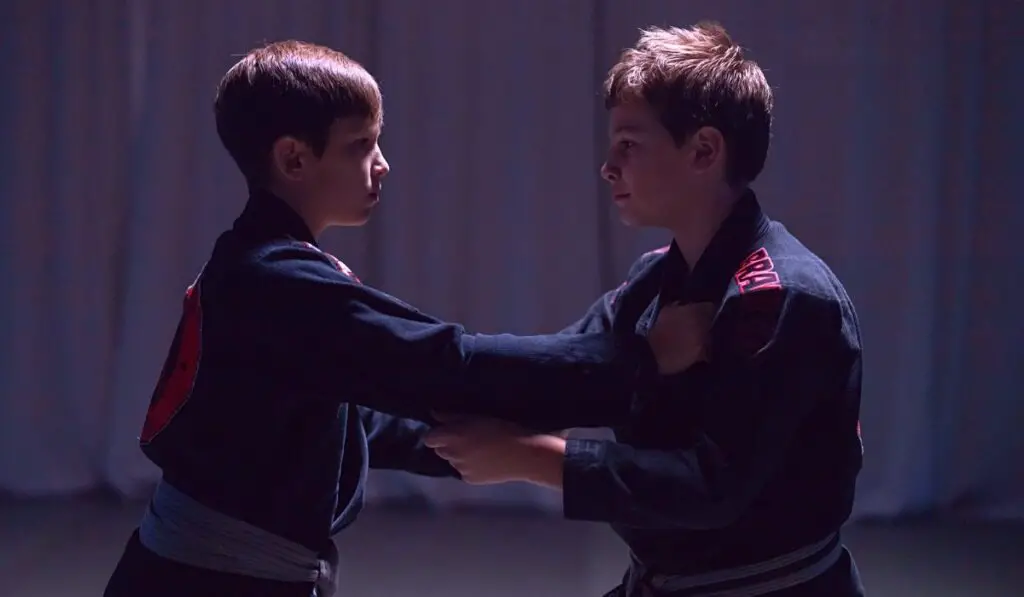Are you curious about the origins of jiu-jitsu? Today, we’ll take a journey through time to explore the rich history and origins of this martial art. Jiu-jitsu is known for its emphasis on ground fighting and submission, and it goes beyond just being a sport. It’s a discipline that teaches patience, respect, and the art of leveraging strength against force.
Whether you’re a martial arts enthusiast or just interested in the roots of this fascinating art, we invite you to join us as we delve into the story of jiu-jitsu, from its ancient beginnings to its place in the modern world. Let’s get started!
History of Jiu-Jitsu in Ancient Greece

Jiu-jitsu wrestling techniques have existed since ancient Greece when the Olympic Games required people to fight one another.
Indeed, you heard the myth of Heracles, a powerful man who uses wrestling and boxing techniques (pankration) to beat their opponents.
Otherwise, during the Greek Olympic Games, the fighters employed various techniques to strike their opponents and take them from standing to the bottom. Therefore, they submitted him.
This evidence proves the origin of Jiu-Jitsu and wrestling in Greek society around the 7th century BC.
Many years after, between the 8th and 16th centuries- Japan was in a war where the samurai protected themselves by implementing many sorts of Japanese Ju-Jitsu.
At that time, the art of Jiu-Jitsu was used on the battlefield to conquer armored and armed opponents.
Samurai Contribution to the History of Jiu-Jitsu

Jujutsu is one of the oldest martial arts styles first seen in Japan as a combination of Sumo and other old Japanese martial arts such as Shinden Fudo-ryū, Tenshin Shōden, Katori Shintō-ryū, and Takenouchi-ryū.
At that time, jujutsu martial arts helped warriors perform close and ground combat to defend themselves if necessary.
Thus, several Japanese Samurai used many sorts of Ju-Jitsu as a self-defense method.
As you may know, the Samurai mastered the art of sword combat to defeat their most potent enemies.
However, on the battlefield, they could wind up bereft of their swords or spears.
Moreover, in these circumstances comes the need to develop solid Jiu-Jitsu self-defense techniques other than using the sword.

As a result, a new self-defense art was born called Kenjutsu, which means “methods, techniques, and the art of the Japanese sword.”
Kenjutsu may be a combination of the art of sword fighting art and some jujitsu techniques extracted around the 20th century from the ko-budō Japanese swords martial art.
Therefore, the Japanese Samurai could perform takedowns and other jujitsu ground fighting techniques well.
However, the heavy samurai’s armor restricts their mobility; therefore, they prioritize choke submissions, joint locks, and throws over the striking techniques.
In Japanese jujitsu history, many schools were a niche of several combat styles over time. Therefore, they focused on throws, chokes, and joint locks with maximum efficiency and minimal effort. Then, the notion of self-defense art started to grow up.
History of Jiu-Jitsu in Brazil

In 1914, Mitsuyo Maeda moved to Brazil taking with him an extensive experience in the field of Judo and Jiu-Jitsu ground fighting.
After a while in Brazil, he met Gastão Gracie, which maybe happened at one of Maeda’s judo demonstrations. Thus, 1914 may be a reference year in the history of BJJ.
In 1921, Maeda opened his own Judo Ju-Jitsu academy in Brazil, where he taught Carlos Gracie (Gastao’s son). Because Gastao thought that training in Judo martial arts would make Carlos a more disciplined person.
Carlos took his first lessons in Kano Ju-Jitsu under Coach Mitsuyo Maeda. Also, he spent the next eight years training and studying Jiu-Jitsu martial arts. Moreover, when he was 22, he decided to form his proper Jiu-Jitsu direction.
In 1925, Carlos got a black belt, and he decided to open the first Gracie Ju-Jitsu martial arts academy in Rio. He started teaching his younger brothers (Oswaldo, Gastao, George, and Helio) immediately.
Hélio Gracie had difficulty executing Kano Judo JuJutsu’s techniques because of his size and lack of strength.
Therefore, he began to adjust the techniques he had learned, refining them until he could use them to submit to anyone, no matter the opponent’s size or strength. Thus, the BJJ (Brazilian Jiu-Jitsu) saw life from these facts.
Jiu-Jitsu History: The Gracie Family Vs the World.

Over the next few years in Brazilian Jiu-Jitsu History, the Gracie family tested the efficiency and refined the art of BJJ by challenging other martial arts in many fights. For example, the famous fight between Helio Gracie and Masahiko Kimura (Judo martial artist champion) in 1950.
Unfortunately, Hélio lost this martial arts fight. However, it was soundproof of the efficiency of the Kimura Lock submission that was included after these events in BJJ submissions systems.
The art of Jiu-Jitsu continued to grow over the years, eventually incorporating aspects of wrestling and other grappling arts into the curriculum.
In the late 1970s, BJJ gained a new appearance when Rorion Gracie (Hélio’s son) immigrated to the U.S. to spread Brazilian JiuJitsu art. Besides, this move changed the way people viewed the art of combat fighting forever.

When Rorion Gracie moved to the United States, it was difficult to demonstrate the effectiveness of the BJJ art without challenging matches against other famous martial artists such as wrestlers.
Rorion and his colleagues searched for the perfect martial arts tournament to showcase the effectiveness of Brazilian Jiu-Jitsu to the world. They found what they were looking for in the Ultimate Fighting Championship (UFC), a new tournament with different rules that pitted the Gracies against other martial arts.
The first UFC fight (UFC 1) happened in 1993 when Royce Gracie was the representative of BJJ in the tournament. Moreover, Royce met his family’s expectations by showing remarkable effectiveness in Jiu-Jitsu art.
Royce Gracie, the most diminutive fighter in the tournament, shocked the spectators by dominating opponent after opponent. As a result, Royce’s UFC victories were a world recognition that BJJ could defeat bigger, more vigorous opponents using the proper technique and mindset.
Winning several subsequent UFC fights by Royce Gracie was an essential event in the BJJ history that led many martial artists to rethink martial arts efficiency. Therefore, many of them around the planet have begun learning the art of BJJ.
Jiu-Jitsu in the Modern World

Jiu-Jitsu has become a global phenomenon, attracting people of all ages and backgrounds for various reasons, such as fitness, self-defense, and competitive sports. The techniques and principles of Jiu-Jitsu have been incorporated into the training regimes of law enforcement and military units worldwide.
Practitioners compete in various weight and skill categories in Jiu-Jitsu competitions held globally. The art has also significantly influenced mixed martial arts (MMA), with many top MMA fighters having a background in Jiu-Jitsu.
For many people, Jiu-Jitsu has become a lifestyle, and they apply its principles of leverage, efficiency, and control daily, promoting a philosophy of balance, respect, and continuous improvement.
Conclusion
Jiu-Jitsu has not only survived the test of time but has thrived and evolved into a tool for personal development, teaching values like discipline, respect, and perseverance. It has empowered individuals, giving them confidence and a sense of accomplishment.
The art has created a community of practitioners worldwide who share a bond and a common language of respect and continuous learning. Jiu-Jitsu’s impact extends far beyond the mats and is admired for its enduring appeal and effectiveness.
Jiu-Jitsu’s journey from the battlefields of feudal Japan to the gyms and arenas of today is a testament to its adaptability and effectiveness. It has transformed not only the art itself but also those who practice it.
Whether you’re a seasoned practitioner or have just discovered the art, Jiu-Jitsu offers a path of physical and mental growth. We encourage you to explore this gentle art, learn its techniques, embrace its philosophy, and become part of its ever-growing global community.
Thank you for reading! Until next time, keep exploring the wonderful world of Jiu-Jitsu!
Recommended: Refrain from allowing the choice between MMA and BJJ to keep you from reaching your full potential. This comprehensive article compares and contrasts MMA and Brazilian Jiu-Jitsu to help you choose the best option. Click here to learn more!


